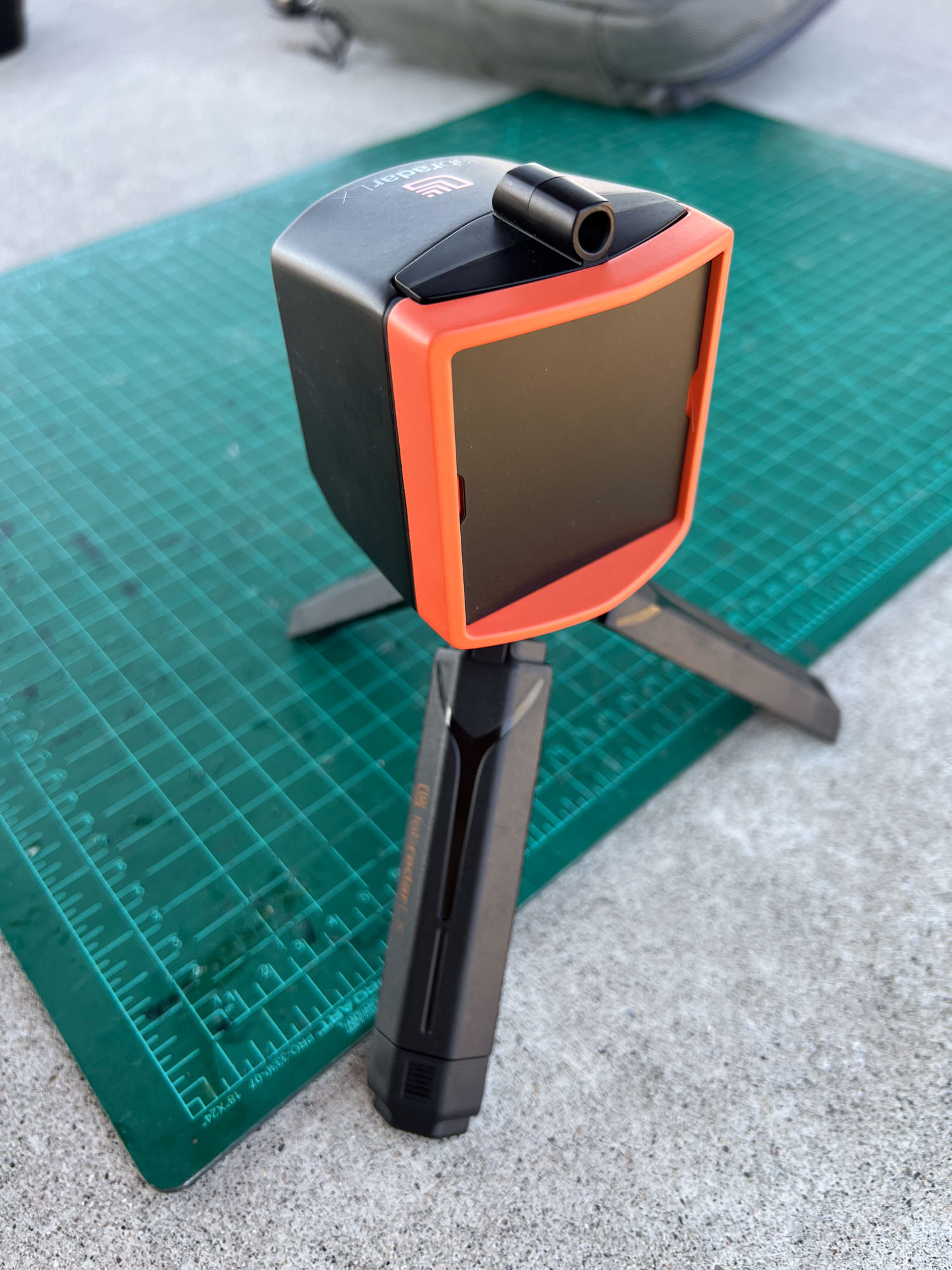Labradar LX Review: Can This Compact Chronograph Dethrone the Garmin Xero C1 Pro?
We may earn revenue from the products available on this page and participate in affiliate programs. Learn More ›
The recently introduced Labradar LX is a significant upgrade over the original Labradar, now called the Labradar V1, which for many years had been the go-to chronograph for serious shooters. The V1’s legacy is substantial. It was the product that introduced doppler chronograph technology to the masses.
The Labradar LX is much smaller than the V1 and easier to use. Not only is it more portable but it does a better job picking up shots than the V1. Where the V1 was hyper-sensitive with how it was positioned in relation to the firearm and the target, the LX is much more forgiving.
The V1 is still offered, but the performance difference is reflected in the cost of the units: The LX is $600 and the V1 is now $350.
Viewed through this lens Labradar fans have good reason to contemplate an upgrade — but the LX doesn’t exist in a vacuum. In 2023, the landscape for chronographs shifted radically with the arrival of the Garmin Xero C1 Pro ($600), a game-changing product that redefined the chronograph market — and it is against this that the Labradar LX is truly competing.
Before jumping into a head-to-head comparison, here’s how the LX stands on its own.
Labradar LX Specs
- Size: 3.0 in. H x. 2.4 in. W x 2.7 in. D
- Weight: 11.5 ounces; 14.8 ounces with included tripod
- Material: Aluminum housing
- Battery: Internal, rechargeable via USB-C port
- Display: 1.37 in. x 1.06 in.
- Internal Storage: Up to 999 shot series with up to 250 shots in each
- Price: $599
Review Highlights
- Picks up shots without difficulty
- Integrates well with Labradar App
- Stores and organizes shot strings
- Long battery life
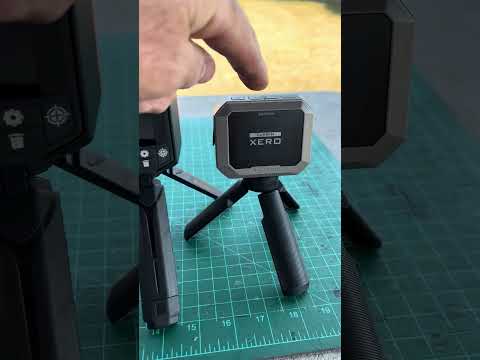
Labradar LX Construction and Controls
The Labradar is encased in an aluminum frame that appears quite durable. The front of the unit has a dark plastic screen that covers the electronics that emit the Doppler radar, and the rear has the LED display and buttons that control its operation. The frame extends a bit past the front screen, offering it some extra protection.
Perched on top of the unit is an aiming tube to orient the LX toward the target. As it turns out, the tube isn’t necessary since as long as the Labradar LX is pointed in the target’s general direction it will register the shots.
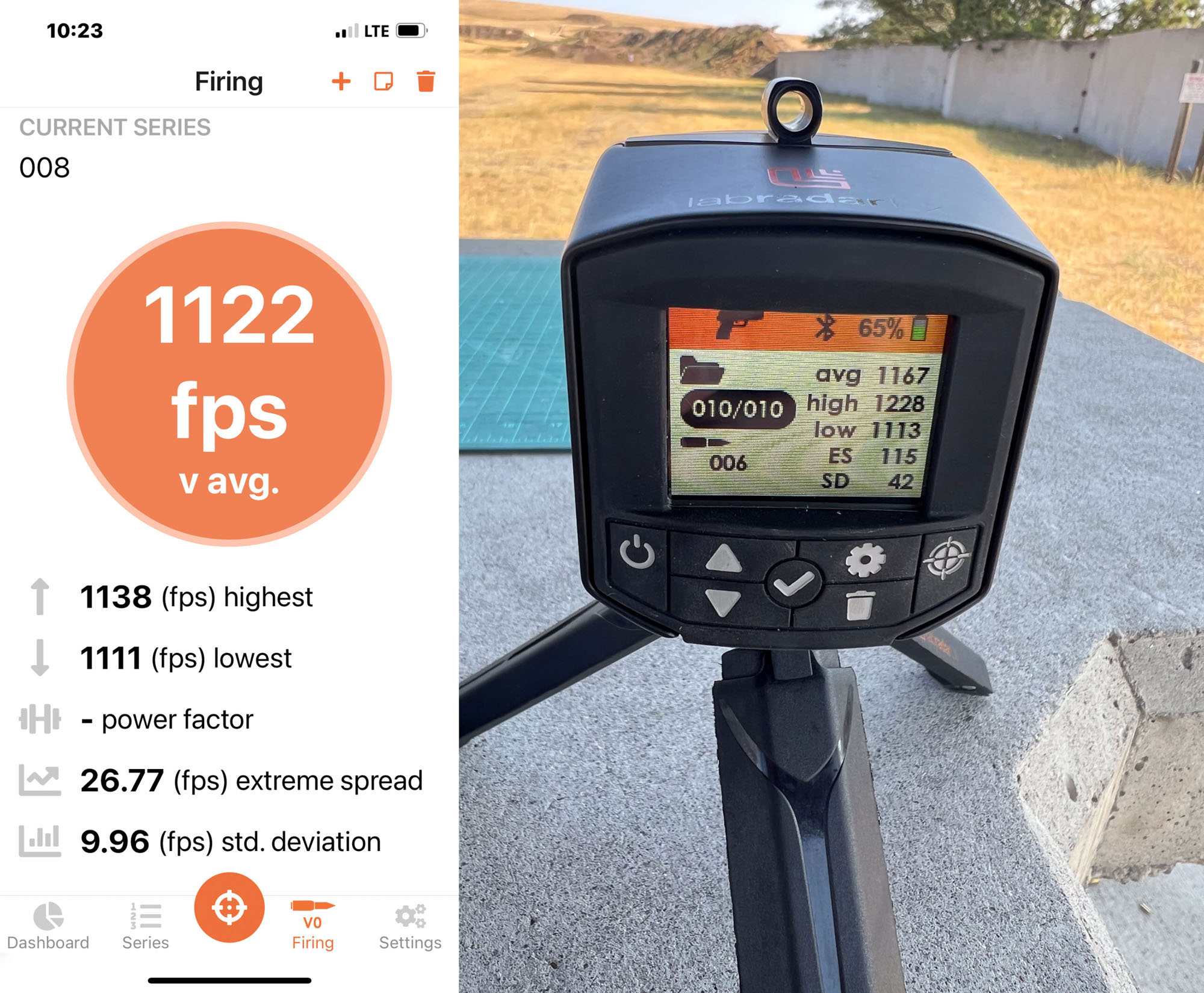
Photo by John B. Snow
On the chronograph’s underside is a ¼-24 thread insert for mounting it to the included tripod and a rubber flap that folds back to reveal a USB-C port and a port for an external trigger. The USB-C port is used to charge the internal battery, transfer data, and upgrade the LX’s firmware.
Seven Button Array
Just below the Labradar’s display screen are seven control buttons with icons. Starting from the left is the power button, up and down arrow buttons to navigate through menus, a checkmark button used to confirm choices, a button that takes you to the settings screen just above a delete button, and the final button on the far right to arm and disarm the radar.
Unlike the Garmin Xero C1 Pro, which is always ready to record a shot, the Labradar LX’s Doppler, like the original V1 model, needs to be toggled on.
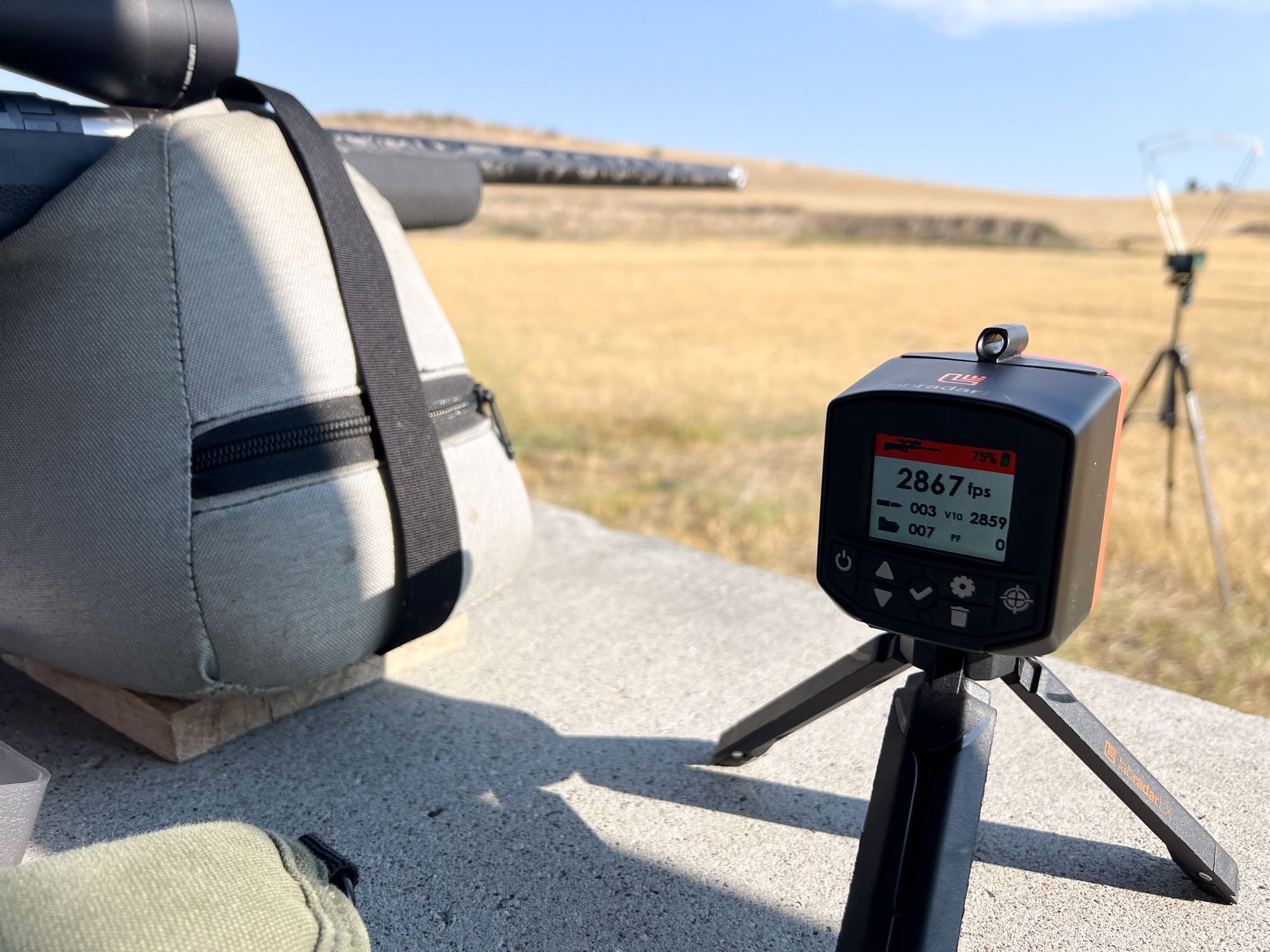
Photo by John B. Snow
Operating the Labradar LX
The Labradar LX takes about 20 seconds to boot up after turning it on. The settings button, with its gear icon, lets you start a new series and select the mode and trigger level. The modes — rifle, handgun, and archery — correspond to the speed of the projectile you’re tracking. While trigger level sets the sensitivity of the unit to help it consistently pick up shots. The trigger level has three settings — Min-Quiet, Med-Default, and Max-Loud.
So, when I shot a suppressed rimfire rifle over the unit, it had to be in “Handgun” mode — since the bullets had a muzzle velocity of 960 fps on average — with the trigger level at “Min-Quiet.”
The “Max-Loud” setting is when shooting with a muzzle brake, and the middle default trigger level is for barrels without a muzzle device.
Once the mode and trigger level are set all you just point the unit toward the target and press the “arm” button to activate the radar. When the unit is armed a band on the top of the display changes from gray to orange.
It took me a while to develop the muscle memory to arm the unit every time I went to start a new series, since I was accustomed to the Garmin Xero C1 Pro, which doesn’t require this extra step. But soon it became second nature to check for the orange indicator before pulling the trigger.
When you’re done shooting, go back to the settings menu and start a new series to save your results.
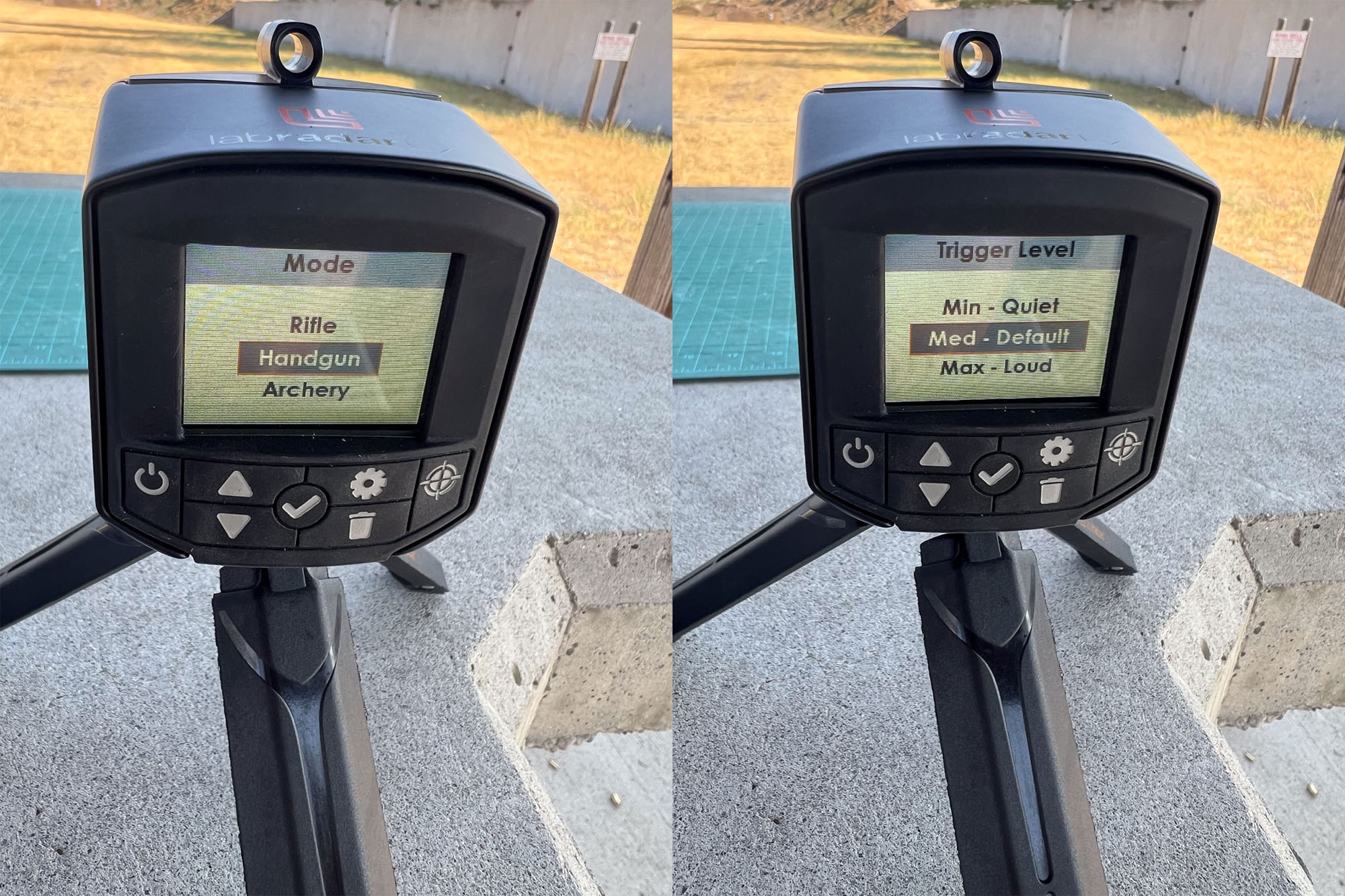
Photo by John B. Snow
How the Labradar LX Trigger Works
The trigger on the Labradar LX has two components, one acoustic, the other doppler. If the acoustic trigger doesn’t pick up a sound to start with, the doppler component won’t register a speed on the display. This helps prevent the LX from detecting a projectile traveling across its radar by another shooter. But it also means the unit can have a hard time hearing quiet shots from suppressed guns and items like slingshots.
If this is a persistent problem you can buy an external magnetic trigger to attach to your firearm, which triggers the unit based on movement and recoil rather than sound. I had one for my V1 Labradar and it was an essential piece of equipment.
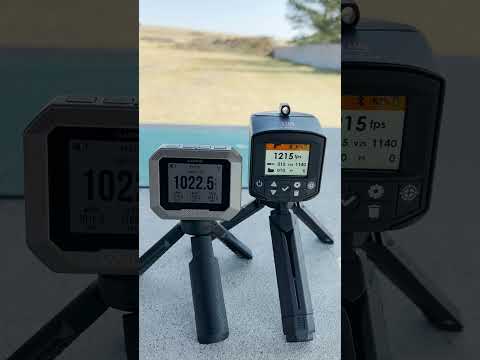
What the Labradar LX Shows
In addition to showing the speed of the current shot, the unit displays how many shots you’ve taken in your latest series, the number of series stored on the chronograph, the bullet’s power factor (which requires you to input the projectile’s weight), and the retained velocity at a distance that you specify. (You can put any distance you want into this setting, but when you input a number greater than 25 yards, the yardage turns red. This indicates that the value will be an interpolated figure rather than an actual measurement of the retained velocity.)
The screen also shows your mode with an icon of a rifle, handgun, or arrow, along with the percentage of battery life left.

Photo by John B. Snow
Positioning the Labradar LX In Relation to the Firearm
As I mentioned, one major improvement over the Labradar V1 is how forgiving the LX is with respect to how it can be positioned.
It will work as long as the unit is within a foot or two of the barrel and positioned behind the muzzle so it doesn’t get blasted.
In the user manual, Labradar says to keep the unit within 20 inches of either side of the barrel. Even when shooting suppressed .22 LR I was able to exceed that distance. It wasn’t until I got to about 29 inches of offset that I noticed the readings start to get a bit wonky giving lower muzzle velocities. (To determine this, I ran the Labradar in tandem with a Garmin. When both were placed close to the firearm, the velocities they recorded were nearly in lockstep, but once the Labradar was more than 29 inches away, its velocities were significantly lower than what the Garmin displayed.)
The Labradar LX is even more forgiving with its orientation toward the target. I was able to rotate the LX 45 degrees to either side and still register shots. My original Labradar couldn’t hold a candle to that.
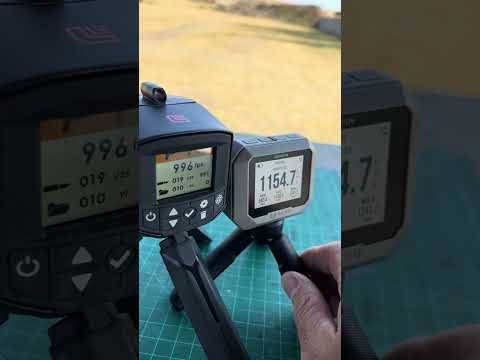
How Fast Can You Shoot Over the Labradar LX?
After a shot the Labradar LX takes about 3.3 seconds to register the result, which it displays prominently in the center of the screen. Once the result is displayed, the unit is ready to record another shot. If you shoot before the prior shot is displayed, the unit won’t pick it up.
The Garmin Xero C1 Pro is a bit faster, taking less than two seconds to be ready to detect the next shot.
Labradar App
One thing I like about the Labradar LX is how it works with the Labradar App. It is a much better experience than what the original unit and app provided.
The app connects to the unit via Bluetooth, and displays the number of series you’ve shot, along with the number of shots you’ve recorded in total. It also shows the remaining battery life.
In the app’s “settings” feature you select the units you want to use (yards/feet/meters, fps vs. m/s, bullet weight in grains or grams, etc.). You can do that in the LX’s settings menu too, but the app is much faster and easier.
You can also initiate a new series, arm the unit, give the series a custom name, and export the data from the app.
Exporting Data from the Labradar App
To export the data, go into the app and select a series. Then go into settings, click the export data button, then hit the “+” sign in the top right corner and select the series again. This will allow you to send the CSV file via text, email or Airdrop to another device.
This process is a little clunky and not very intuitive, but once you figure it out it is fairly simple.
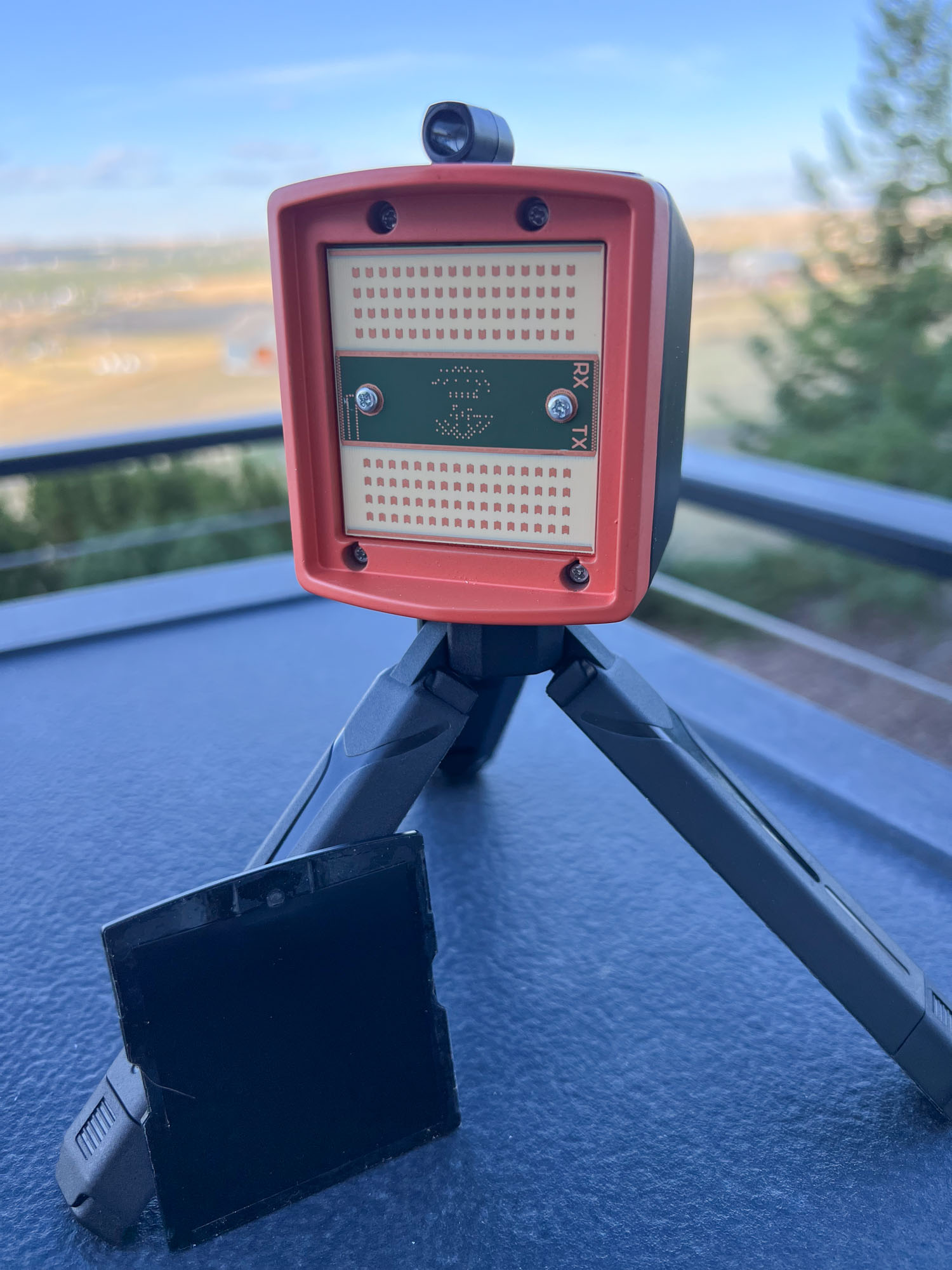
Photo by John B. Snow
Mounting the Labradar LX on a Rifle
One benefit of these mini-sized doppler radars is the ability to mount them directly to a rifle. This is especially useful in ELR competition where slight variations in muzzle velocity can dramatically affect a bullet’s vertical trajectory.
Should you hit unexpectedly low on a target at 1,800 yards, for instance, the chronograph can tell you whether it was due to a slower muzzle velocity, providing guidance on how much to correct for subsequent shots.
I can vouch for the utility of this feature, as I’ve shot several rifles with my Garmin Xero C1 Pro attached, including my go-to rifle for ELR competition, an Accuracy International AXSR chambered in 300 PRC.
One thing to note about the Labradar, however, is that the user manual contains the following warning:
Mounting has been tested with rifles up to 7.62mm. Care should be taken to make sure the device does not get exposed to too much acceleration as damage may occur. Mounting the device on a firearm caliber larger than 7.62mm is not covered by the warranty.
I spoke with the company and they confirmed that a .308 Win. is the maximum level of recoil the unit is rated for. So shooters who use milder cartridges in competition, like the 6.5 Creedmoor, 6mm GT, and 6 Dasher won’t have any issues mounting the LX to their rifles, but anyone who shoots a boomer should think twice before attempting it.
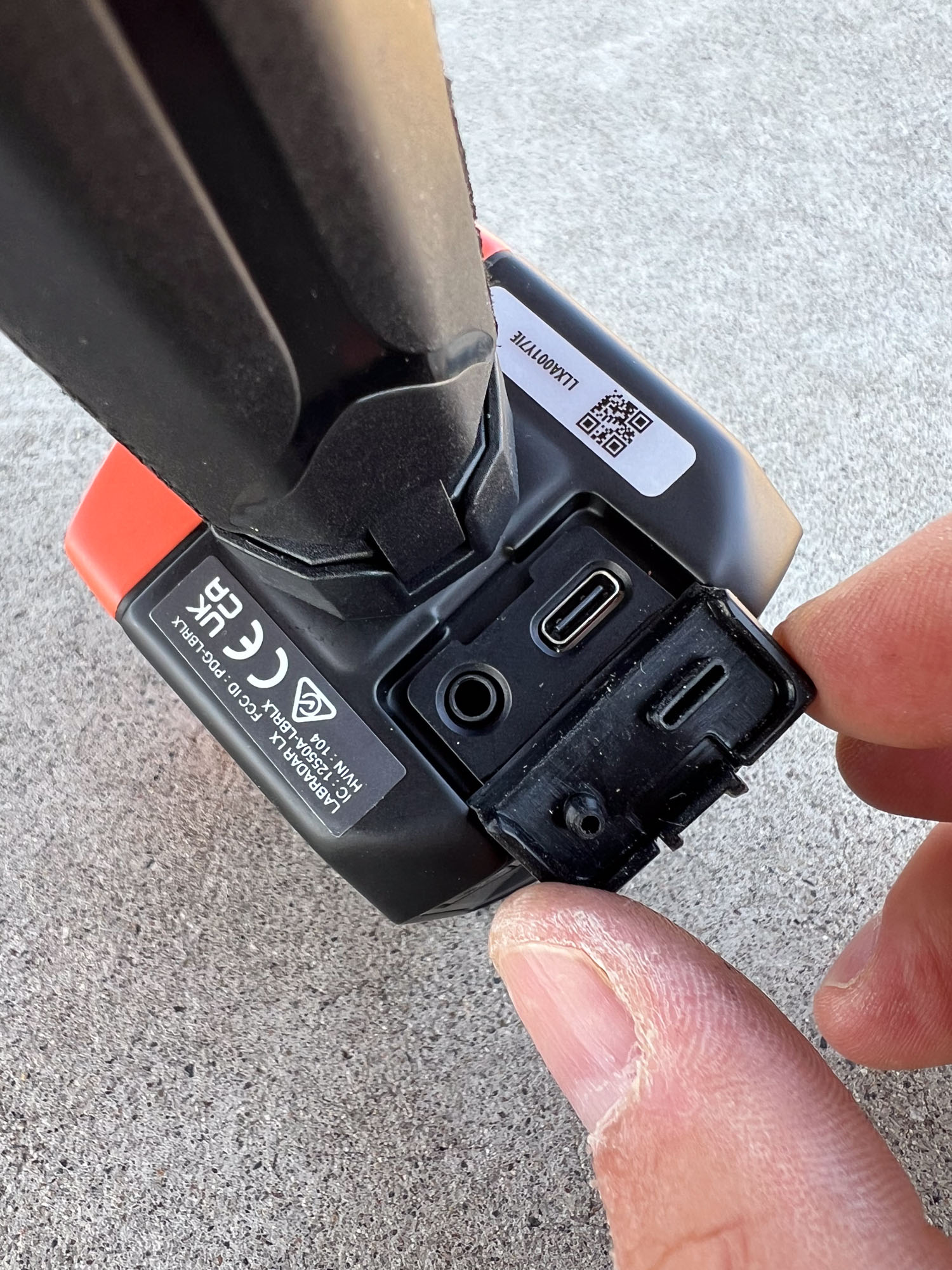
Photo by John B. Snow
Updating the Firmware
Labradar has been sending out frequent updates for the LX’s firmware, which is a good thing. These updates have debugged some issues, and improved performance in other areas.
Unlike the Garmin Xero C1 Pro, which updates automatically when the chronograph connects to the app, the Labradar requires a manual firmware update.
This involves downloading the latest firmware to your computer, connecting the LX to the computer via a USB cable, and then placing the update on the LX’s internal memory.
If you’re unlucky enough to use a Mac computer, as I am, the process is more complicated. For whatever reason, the Mac OS operating system cannot detect the Labradar as an external device.
So you need to download another piece of software, called OpenMTP, to do that.
But even after running OpenMTP, I couldn’t get the Labradar to appear on my computer. I had to deactivate some software running in the background, like Google Drive, in order for OpenMTP to work.
The whole thing took me a few days, and way too many hours to figure out. It was frustrating in the extreme, but I wanted to be sure I was running the unit with the latest firmware before publishing the results of my test.
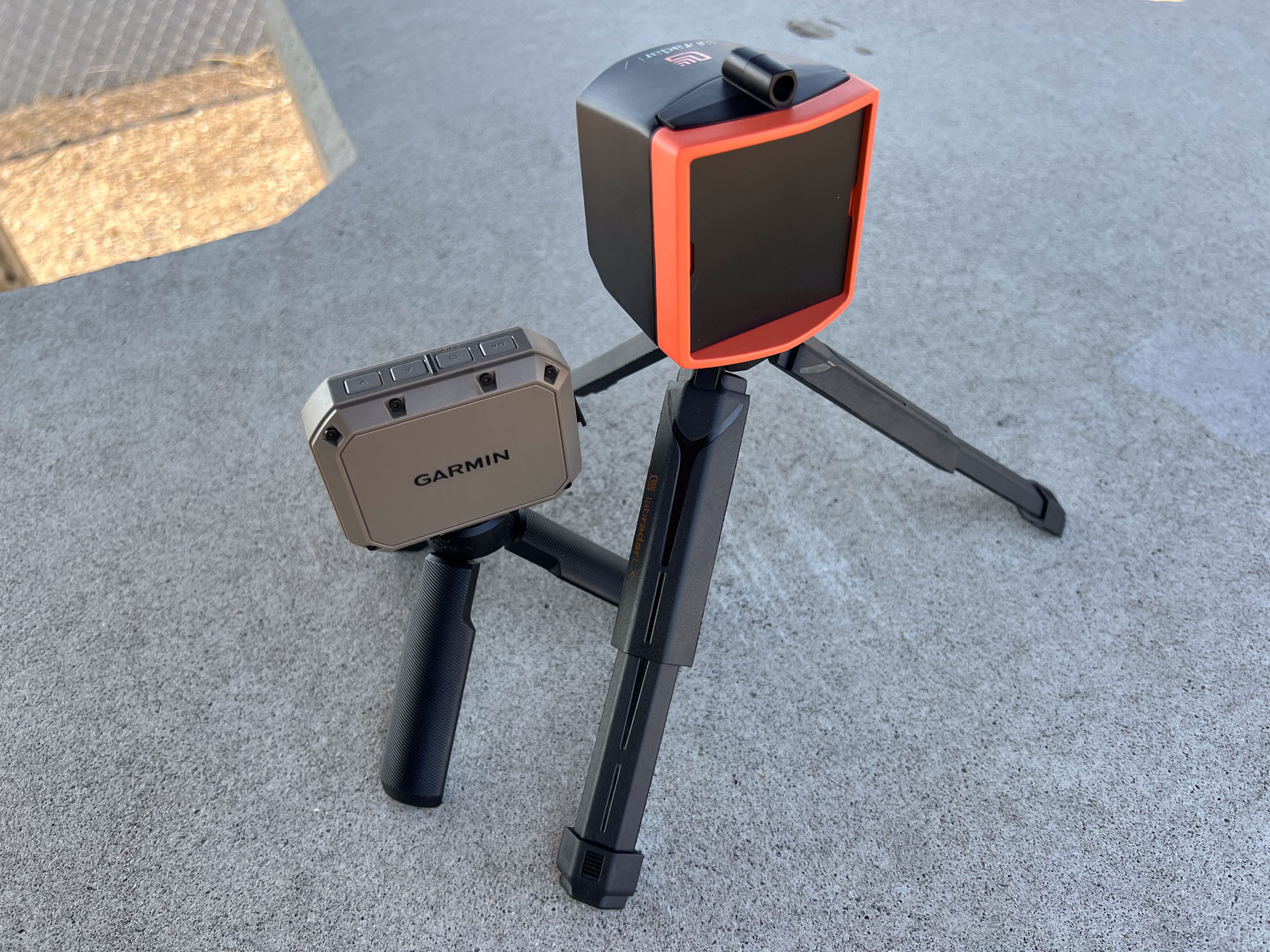
Photo by John B. Snow
How Does It Compare to the Garmin Xero C1 Pro?
The Labradar LX holds its own against the Gamin Xero C1 Pro. It beats it in one category, ties it in another, but ultimately isn’t as polished, handy, or well-designed as the Garmin.
Size (Garmin): The Garmin is smaller and much lighter than the Labradar LX. The Garmin weighs just 3.7 ounces compared to the LX’s 11.5 ounces, a huge difference especially if you want to mount the chronograph on a rifle or bow. It’s overall size (2.4 in. H x 3.0 in. W x 1.3 in. D) compared to the LX (3.0 in. H x. 2.4 in. W x 2.7 in. D) makes it handier as well.
Battery Life (Tie): Both units will have enough juice to last through a full day of shooting. The Labradar will run down more quickly if you keep it in “armed” mode, but as long as you remember to put it in the stand-by mode it’ll hang in there.
Display (Garmin): The display on the Garmin is larger (1.75 in. x 1.3 in.) and easier to read than that on the Labradar (1.37 in. x 1.06 in.). Fans of the LX talk about its bright backlit screen, which is certainly legible, but Garmin’s screen performs nearly as well in direct sunlight. The Labradar also goes into a screen saver mode, at which point you can’t read it at all until you press a button. You can adjust the duration of time before this happens (mine came from the factory at a default 10 seconds), but the more you increase that value, the faster the LX will eat up its battery charge.
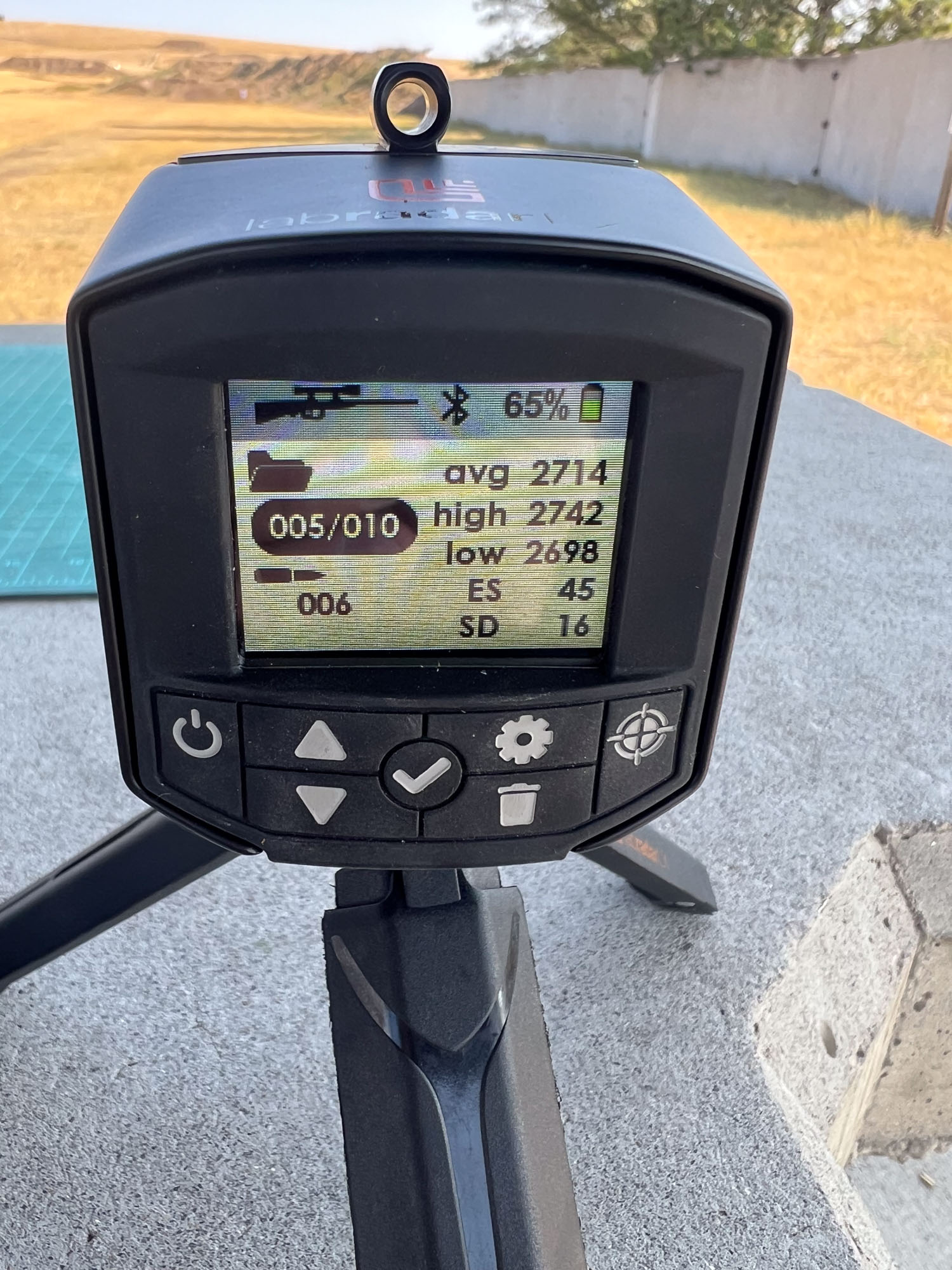
Photo by John B. Snow
Controls (Garmin): The Garmin’s simple four-button layout is easy and intuitive to use. The seven-button system on the Labradar LX is good, but not as elegant.
App Quality (Garmin): The Garmin Shotview App is intuitive and simple to use. It allows the user to export data more easily than the Labradar, which is a big plus. That said, the Labradar app is useful as well, especially for adjusting the unit’s settings. It just isn’t quite as polished as Garmin’s offering.
Shot Forgiveness (Labradar): While the Garmin does a slightly better job picking up shots when the unit is placed to the side of the firearm, the Labradar excels in its ability to record shots taken at an angle to the unit. My Labradar LX picked up shots at 45 degrees off center on either side, compared to the 23 degree I measured with the Garmin.
Shot Detection (Garmin): Both units do a good job picking up shots, but the Garmin is a tad more consistent. For example, when shooting a slingshot over both units the Labradar struggled to record the speed of the projectile unless the slingshot was right above the unit, where the Garmin picked up every shot without hesitation.
I attribute this to how the units are designed to capture a shot. The Garmin’s Doppler is always in a standby mode where the flight of the projectile in front of it triggers the unit to grab the velocity. The Labradar LX uses a two-layered trigger, one of which is acoustic. So if there isn’t enough noise next to the unit (the slingshot being comparatively quiet) it won’t register the shot.
The Garmin also records shots faster than the Labradar, taking 1.9 seconds to display the velocity and be ready for the next shot compared to 3.3 seconds for the LX.
Firmware Updates (Garmin): The Garmin firmware updates automatically when it is connected to the app when you have wifi or cell service. The Labradar LX’s firmware needs to be updated manually, and if you have a Mac computer it is a real pain in the ass.
Ease of Use (Garmin): Both units are easy to operate, but the Garmin Xero C1 Pro is the more idiotproof of the two. It boots up faster, records shots more quickly (1.9 seconds versus 3.3 for the LX), and has cleaner controls and a more refined app.

Photo by John B. Snow
Labradar LX Pros and Cons
There’s a lot to like about the Labradar LX and not much in the minus column.
Pros:
- Easy to use
- Portable
- Good battery life
- Functional app
Cons:
- Firmware updates are a pain
- Requires a bit of a learning curve to set up and run
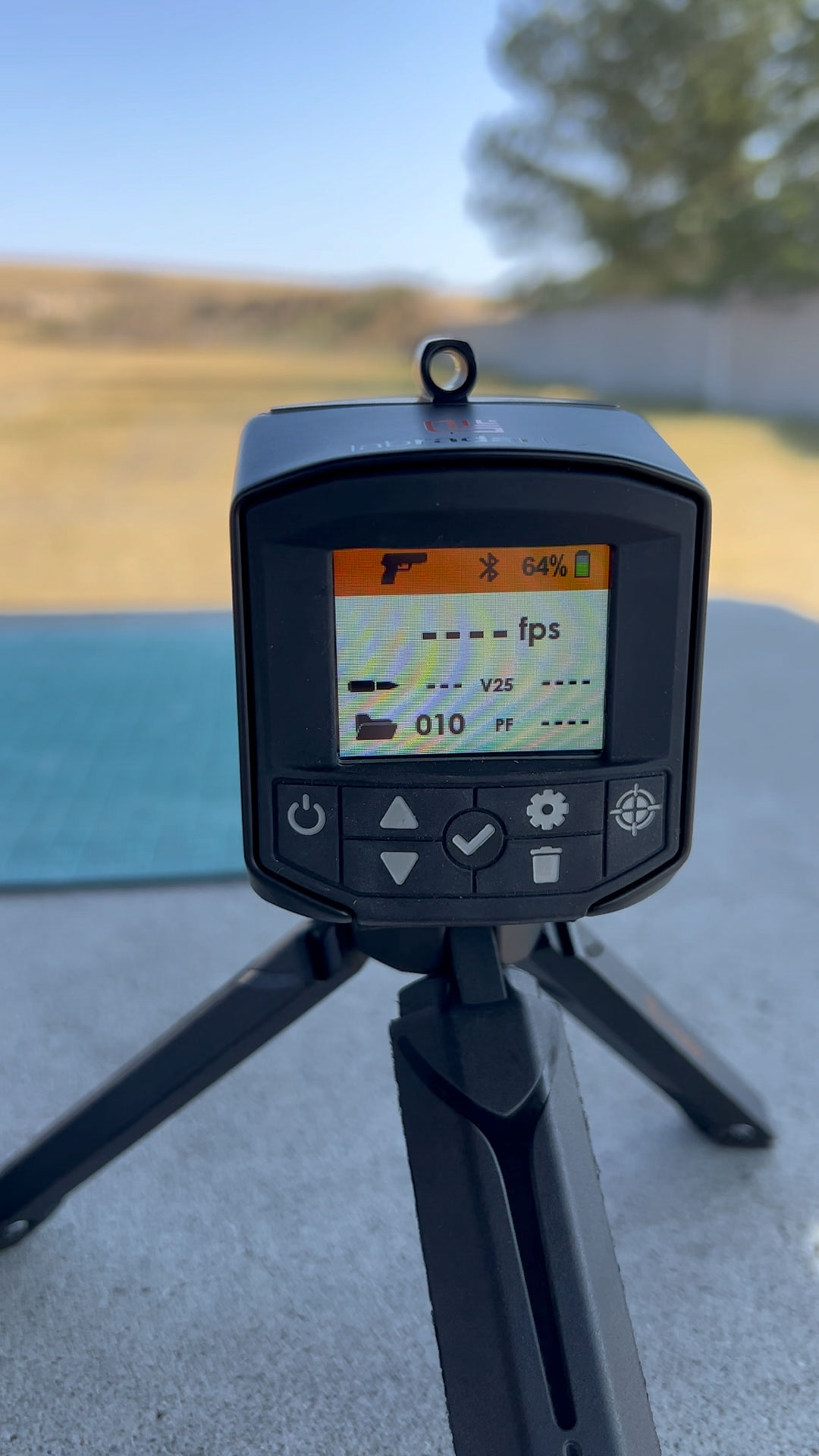
Photo by John B. Snow
Final Thoughts on the Labradar LX
I was pretty impressed by Labradar’s new compact doppler chronograph. It is a big leap beyond the first-gen Labradar. If it weren’t for the existence of the Garmin Xero C1 Pro, I wouldn’t hesitate to recommend it.
But in the final analysis the Garmin is a superior product by nearly every measure — and with both being the same price I know where I would spend my money.
The post Labradar LX Review: Can This Compact Chronograph Dethrone the Garmin Xero C1 Pro? appeared first on Outdoor Life.
Source: https://www.outdoorlife.com/gear/labradar-lx-review/

